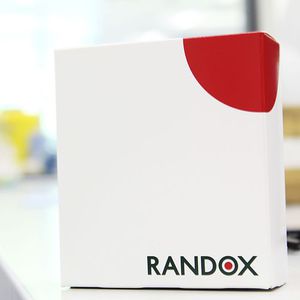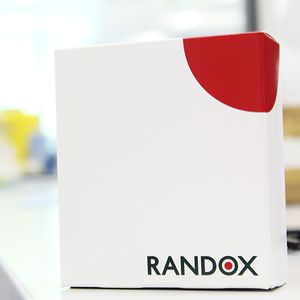
- Laboratory
- Laboratory medicine
- Solution reagent
- Randox Laboratories
Total antioxidant status reagent NX2332solutionfor clinical chemistrycolorimetric
Add to favorites
Compare this product
fo_shop_gate_exact_title
Characteristics
- Type
- solution
- Applications
- for clinical chemistry
- Tested parameter
- total antioxidant status
- Method
- colorimetric
Description
The Randox TAS assay utilises the colorimetric method, offering convenience and efficiency in comparison to ELISA technology and produces results in as little as 3 minutes.
Excellent measuring range
The Randox TAS assay is linear up to 2.50mmol/l enabling the comfortable detection of clinically important results.
Lyophilised reagents
Lyophilised reagents offer enhanced stability, reducing wastage.
Standard supplied with the kit
The standard is supplied with the TAS kit, simplifying the ordering process.
Dedicated TAS control available
Dedicated TAS control available offering a complete testing package.
Applications available
Applications available detailing instrument-specific settings for the convenient use of the Randox TAS assay on a variety of clinical chemistry analsyers.
Free radicals / reactive oxygen species (ROS) are produced during normal cellular metabolism, however, can have harmful effects. Antioxidants are the first line of defence and are produced by the body to neutralise the harmful effects of ROS, preventing cellular damage 1,2, 3. Measuring total antioxidant status (TAS) can provide information on an individual’s overall antioxidant status, which may include antioxidants not yet recognised or not easily measured. The TAS of a sample is a quantitative measurement of the state of balance of the various components (exerting actions in different way) under specified reaction conditions
Catalogs
No catalogs are available for this product.
See all of Randox Laboratories‘s catalogsExhibitions
Meet this supplier at the following exhibition(s):


Related Searches
- RANDOX test kit
- RANDOX solution reagent
- Blood assay kit
- RANDOX molecular biology reagent
- RANDOX research reagent
- RANDOX diagnostic reagent
- RANDOX laboratory reagent
- RANDOX protein reagent
- Immunoassay rapid diagnostic test
- Cassette rapid diagnostic test
- RANDOX molecular biology test kit
- RANDOX rapid virus test
- RANDOX enzyme reagent
- Whole blood detection kit
- Respiratory infection test kit
- Histology reagent kit
- RANDOX rapid infectious disease test
- Cassette assay kit
- RANDOX immunoanalysis reagent
- Cytology reagent kit
*Prices are pre-tax. They exclude delivery charges and customs duties and do not include additional charges for installation or activation options. Prices are indicative only and may vary by country, with changes to the cost of raw materials and exchange rates.





































































